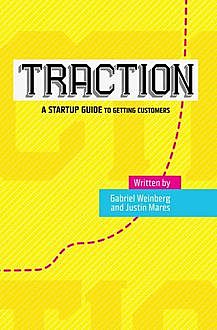
Traction: A Startup Guide to Getting Customers
Dojmovi
- 洪一萍je podijelio/la dojamprije 5 godina
Traction is the sign that something is working, that your product is “taking off.” It’s what you need to prove in order to get investment, and it’s one of the defining qualities of a startup.
Most people have a product, but what they fail to get is traction for that product.
There are 19 traction channels:
Viral Marketing
PR
Unconventional PR
SEM
Social and Display Ads
Offline ads
SEO
Content Marketing
Email Marketing
Engineering as Marketing
Targeting Blogs
Business Development
Sales
Affiliate Programs
Existing Platforms
Tradeshows
Offline events
Speaking engagements
Community building
Odds are you have some bias towards one or a few of the channels, but you should look at all of them as potential opportunities.
Use the “Bullseye Process” to find the traction channels you initially go after.
Brainstorm how you might use EVERY traction channel. Put each channel in a spreadsheet with how you might use it, a 1-5 rating of how well that might work, the cost to acquire through this channel, how many customers you might get through it, and the timeframe for implementation.
Rank the channels into three categories: the inner circle where there’s the most opportunity (your top 3), the potential opportunities, and the long shots.
Prioritize: if you have more than 3 in your inner circle, cut it down.
Test your inner circle ideas: you’re not trying to get a lot of traction just yet, you’re only seeing if there’s potential there.
Focus: depending on how the tests went, pick one channel to focus primarily on. Depending on the stage of your startup, this channel will change.
The 50% rule: spend 50% of your time on product, 50% on traction.
Your traction strategy should always be focused on moving the needle for your company, making a measurable difference in the number you care most about for success.
Most of the book is providing examples and stories to help you execute on each traction channel, highly recommend looking at it based on your curiosity about each one.
Citati
- b7338990463je citiraoprije 5 godinaSales works best for high-priced products that require some customer hand-holding.
Good first customers have a burning need to address a problem, are interested in your approach to solving their problem, and are willing to work with you closely.
Cold calling should not be ruled out as a sales approach, especially when trying to find first customers.
The goal of sales is building a repeatable sales model. An effective sales funnel has prospects enter at the top, qualifies these leads, and closes them effectively.
To close sales effectively, get the buyer to commit to timelines based on specific actions being taken and met. At each point get an affirmative that you are on track to close.
When designing your sales funnel, always keep in mind the perspective of the customer, especially in terms of reducing the complexity of the buying process. - Nastya Tsisarje citiraoprije 5 godinasimple 30-second voice spot can run you $300–500, whereas a professionally recorded ad (sound studio, special effects, etc.) can cost 3–10x as much
- Nastya Tsisarje citiraoprije 5 godinaad running on a station for a week is often $500–1,500 in a local market, and up to $4,000–8,000 in a larger market like Chicago.

